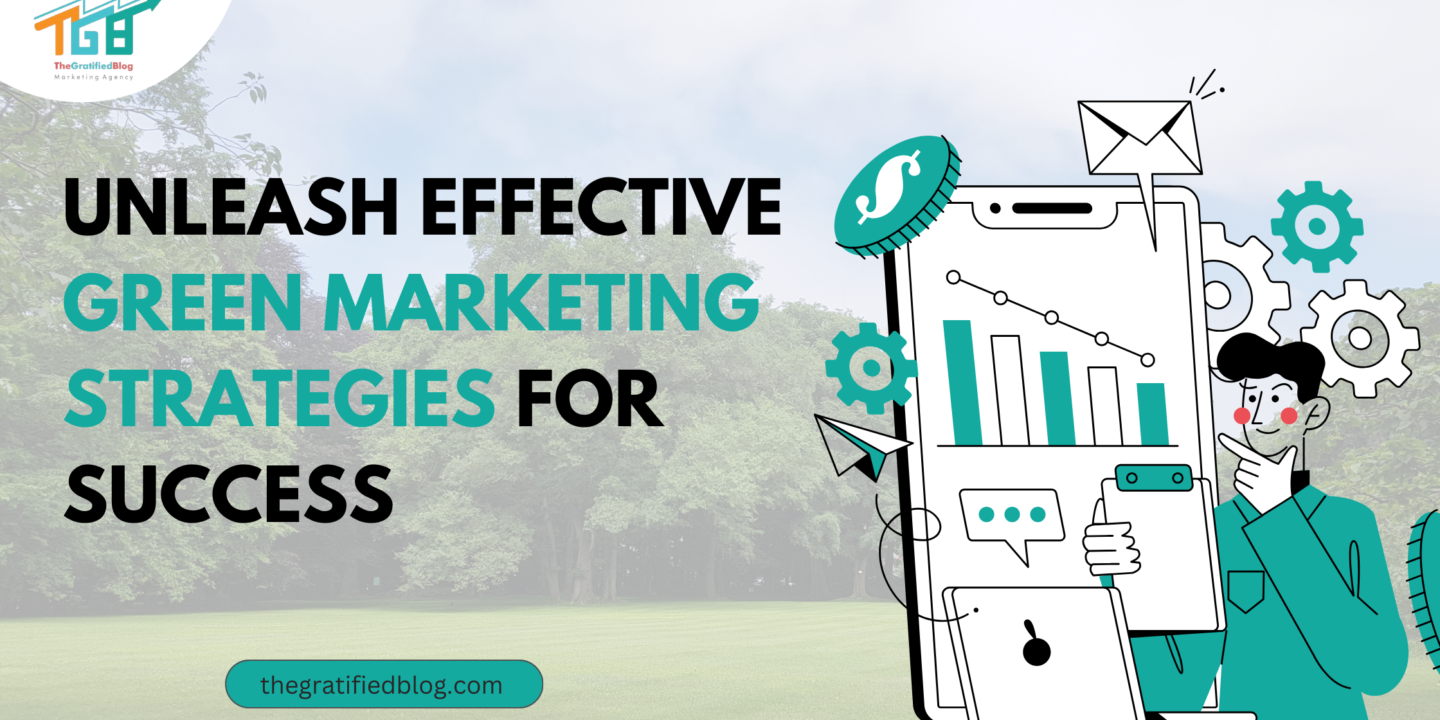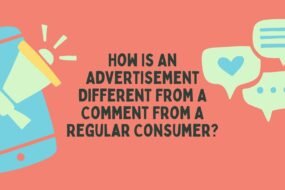
In today’s dynamic and environmentally conscious market, the concept of “green marketing strategies” has emerged as a pivotal tool for businesses striving to
Attain sustainable expansion while positively influencing the planet. Green marketing encompasses a range of strategies and practices aimed at Advocating for goods or services that prioritize environmental stewardship and social responsibility.
This blog delves into green marketing strategies, highlighting their significance, types, successful implementations, and challenges.
Join us as we navigate the landscape of green marketing and discover how businesses can thrive by embracing sustainability in their marketing endeavors.
So, let’s get started:
Understanding Green Marketing?
Green marketing, alternatively called environmental marketing or sustainable marketing, refers to developing and promoting products, services, and business practices designed to minimize adverse environmental impacts and promote sustainable living.
Benefits Of Adopting Green Marketing Strategies
Green marketing strategies benefit businesses, consumers, and the environment. Here are three critical benefits explained in detail:
- Enhanced Brand Reputation and Loyalty: Companies that embrace green marketing strategies often experience an improvement in their brand reputation. By showcasing a commitment to environmental sustainability and responsible business practices, they appeal to a growing segment of eco-conscious consumers. This positive perception can lead to higher brand loyalty and trust, as consumers favor companies that share their values. Moreover, a solid green brand image can attract environmentally conscious investors, partners, and employees, further bolstering the company’s reputation and market position.
- Cost Savings and Efficiency: Green marketing strategies often go hand in hand with initiatives to reduce resource consumption, waste generation, and energy usage. Companies prioritizing sustainability in their operations can achieve significant cost savings over time. For example, implementing energy-efficient practices, such as using renewable energy sources or optimizing production processes, can lower utility bills and operational expenses. Similarly, adopting sustainable packaging solutions and reducing packaging waste benefits the environment and reduces packaging costs and logistics expenses. These cost savings contribute to improved profitability and financial sustainability for businesses.
- Market Differentiation and Competitive Advantage: In today’s competitive marketplace, standing out is crucial for businesses, making differentiation essential and capturing consumer attention. Green marketing provides a unique avenue for differentiation by offering eco-friendly products, services, and experiences that appeal to environmentally-conscious consumers. Companies that effectively communicate their sustainability efforts and eco-friendly initiatives can differentiate themselves from competitors, leading to a competitive advantage. This differentiation can increase market share, customer acquisition, and revenue growth as consumers increasingly prioritize sustainability in their purchasing decisions.
Challenges Faced In Implementing Green Marketing Initiatives
Implementing green marketing initiatives comes with its own set of challenges despite the potential benefits. Here are three critical obstacles explained briefly:
- Consumer Education and Perception: Another challenge is practical consumer education and communication. Many consumers may need help understanding green products and services’ environmental benefits or value propositions. Companies must invest in clear and compelling messaging to educate consumers about their offerings’ sustainability features and dispel misconceptions or greenwashing accusations. Building trust and credibility around green marketing requires transparent communication and consistent messaging across all touchpoints.
- Supply Chain Complexity: Green marketing initiatives often require collaboration and coordination across the supply chain. Suppliers, manufacturers, distributors, and retailers must align their practices to ensure the sustainability and traceability of products from sourcing to disposal. Managing a complex supply chain with multiple stakeholders and ensuring compliance with environmental standards and regulations can be challenging. Companies need robust supply chain management systems and partnerships to address these complexities effectively.
Now that we’ve covered what green marketing entails, its advantages, and the challenges it faces, let’s delve into the core topic: Green marketing strategies.
Green Marketing Strategies

Product-based strategies:
- Eco-friendly product design: This means designing products to minimize their environmental impact throughout their lifecycle. For example, it uses recycled materials, reduces energy consumption during manufacturing, and designs easily recyclable or biodegradable products.
- Sustainable packaging: This involves using environmentally friendly materials, such as biodegradable plastics, recycled paper, or minimal packaging, to reduce waste. It also includes optimizing packaging sizes to reduce transportation-related emissions.
- Certifications and labels: Companies can obtain certifications (e.g., USDA Organic, Energy Star) or use eco-labels on their products to communicate their environmental credentials to consumers. These labels assure consumers that the products meet specific environmental standards and criteria.
Promotion-based strategies:
- Green advertising and messaging: This refers to promoting products or brands using messaging that highlights their eco-friendly features, benefits, and contributions to environmental conservation. It may include advertisements focusing on sustainable practices, green initiatives, or environmental impact reduction.
- Corporate social responsibility (CSR) initiatives: Companies engage in CSR initiatives by supporting environmental causes, sponsoring community events, or implementing sustainability programs. This fosters a positive brand image and demonstrates a social and ecological responsibility commitment.
- Partnerships and collaborations with environmental organizations: Companies collaborate with ecological organizations or nonprofits to support conservation projects, promote sustainable practices, or raise awareness about environmental issues. These partnerships can enhance brand credibility and engage consumers who value ecological stewardship.
Pricing-based strategies:
- Pricing incentives for eco-friendly products: This involves competitive pricing or discounts to encourage consumers to choose sustainable options over conventional ones.
- Discounts for recycling or reusing products: Companies offer perks such as discounts or rewards to customers who recycle products or participate in recycling programs. This encourages responsible disposal practices and promotes a circular economy.
- Financial support for environmental causes: Companies allocate a portion of their revenue or profits to support environmental causes or sustainability initiatives. This contributes to environmental conservation and enhances brand reputation and consumer trust in the company’s commitment to sustainability.
Now that you know the strategies, let’s explore two effective green marketing campaigns.
Successful Green Marketing Campaigns
Starbucks
Starbucks has been LEED-certified since 2005 but aims to eliminate plastic straws by 2020 and open 10,000 eco-friendly stores by 2025. They actively engage their community in sustainability, using green materials for production, packaging, and delivery.
Through their Green Store initiative, they’re reducing waste and aiming for significant water and power usage reductions. They also focus on eco-friendly coffee cup designs, recycling, green building, supporting sustainable farming, and effectively communicating their sustainability efforts to their audience.
IKEA
IKEA employs various strategies and resources to manage waste and promote renewable energy. With 90% of its buildings equipped with solar panels, wind farms for energy generation, and extensive tree planting initiatives, IKEA sends only 15% of its waste to landfills.
The brand’s People & Planet Positive strategy encourages environmental consciousness among consumers, offering eco-friendly products without compromising style. Recognized for its sustainable efforts, IKEA has earned accolades for respecting human rights and contributing to the environment. It is dedicated to attaining 100% renewable energy while investing heavily in green initiatives.
Conclusion
Green marketing strategies help the environment, improve brand image, and attract customers who care about eco-friendly practices. As more businesses focus on sustainability, we’ll likely see new green technologies, more informed consumers, and a move towards a greener business environment. This shift is crucial for businesses to succeed in the future.
However, if you still have any questions related to the blog, please feel free to leave them in the comment section below. We will be happy to answer them.
Thanks for reading:)








No Comments